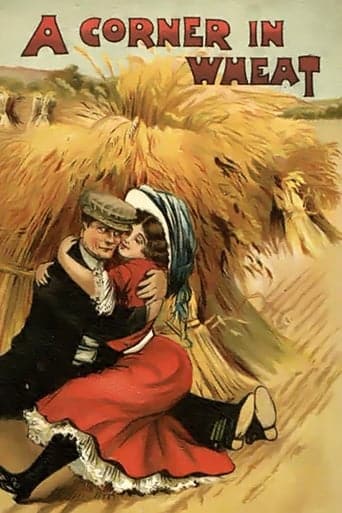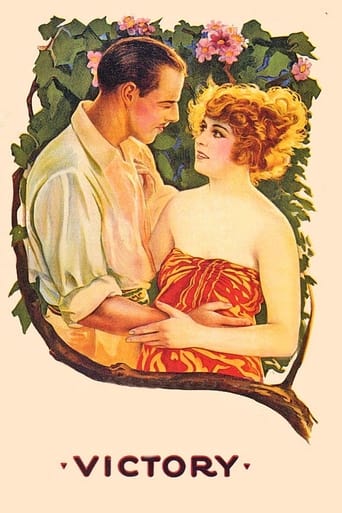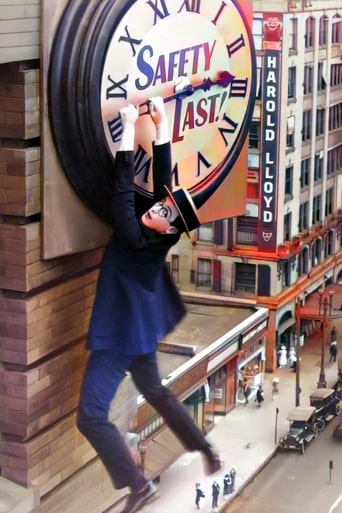Corner in Wheat (1909)

 “Corner in Wheat” (1909), directed by D.W. Griffith and featuring Frank Powell, James Kirkwood, Linda Arvidson, W. Chrystie Miller, and Henry B. Walthall, is a pioneering silent short film that delves into the perils of unchecked capitalism and the devastating impact it can have on society.
“Corner in Wheat” (1909), directed by D.W. Griffith and featuring Frank Powell, James Kirkwood, Linda Arvidson, W. Chrystie Miller, and Henry B. Walthall, is a pioneering silent short film that delves into the perils of unchecked capitalism and the devastating impact it can have on society.
In this early cinematic exploration of social commentary, Griffith crafts a narrative that exposes the ruthless machinations of an unscrupulous capitalist who seeks to manipulate the wheat market for personal gain.
At the heart of the film is a powerful critique of greed and the consequences of corporate avarice. The narrative unfolds with the introduction of an unscrupulous capitalist, portrayed by Frank Powell, whose sole objective is to corner the wheat market. The term “cornering the market” refers to the act of acquiring such a significant quantity of a commodity that one gains control over its supply, enabling manipulation of prices to maximize profits.
As the capitalist sets his plan in motion, the film takes the audience on a journey through the various stages of wheat production and distribution. The narrative structure provides a comprehensive overview of the interconnected processes that bring wheat from the fields to the market, highlighting the vulnerability of the system to manipulation by those with significant financial power.
James Kirkwood plays a key role in the film as a farmer whose struggles represent the broader challenges faced by those in the agricultural sector. His character becomes a symbol of the everyday person affected by the machinations of powerful capitalists who exploit the market for personal gain. Linda Arvidson, W. Chrystie Miller, and Henry B. Walthall contribute to the ensemble cast, each portraying characters representative of different facets of society impacted by the capitalist’s actions.
Griffith’s direction is noteworthy for its innovative approach to storytelling and its use of visual metaphors to convey complex themes. The film’s structure, with its intercutting of scenes depicting the capitalist’s manipulations and the struggles of the common people, creates a stark juxtaposition that emphasizes the disparity between those who exploit the system and those who suffer its consequences.
One of the film’s most memorable sequences is the depiction of the capitalist’s opulent banquet. As he revels in his success, the juxtaposition of the lavish feast with the stark reality of the farmers’ plight serves as a powerful visual metaphor. Griffith’s use of visual storytelling techniques underscores the stark contrast between the indulgence of the elite and the hardship faced by those at the mercy of market manipulation.
“Corner in Wheat” is notable not only for its social commentary but also for its technical innovations. Griffith employs cross-cutting, a technique in which multiple scenes are interwoven to create a sense of parallel action. This method enhances the film’s narrative complexity, allowing the audience to witness both the capitalist’s schemes and the repercussions on the farmers in a seamless and impactful manner.
The film’s conclusion is a poignant commentary on the cyclical nature of economic exploitation. As the capitalist’s actions lead to a sharp rise in wheat prices, the film depicts the devastating impact on the common people, particularly in scenes of a bread riot. The juxtaposition of the capitalist’s success with the suffering of the masses serves as a stark reminder of the human cost of unchecked greed.
“Corner in Wheat” holds historical significance as one of the earliest examples of a socially conscious film that sought to address economic inequality and corporate exploitation. In an era when cinema was still finding its narrative language, Griffith demonstrated a keen awareness of the medium’s potential for social commentary. The film serves as a precursor to later works that tackled similar themes in more extended formats.
In conclusion, “Corner in Wheat” (1909) remains a landmark film in the history of cinema, notable for its early exploration of social commentary and its critique of unbridled capitalism. D.W. Griffith’s innovative use of visual storytelling techniques and the film’s powerful narrative structure contribute to its enduring relevance. As a cinematic examination of the consequences of greed and market manipulation, “Corner in Wheat” stands as a testament to the capacity of film to engage with important social issues, even in its nascent years.
Release Date: Dec 13th, 1909
Main Cast Members
Frank Powell (The Wheat King)
James Kirkwood (Farmer)
Linda Arvidson (Farmer’s Wife)
W. Chrystie Miller (Farmer’s Father)
Henry B. Walthall (Wheat King’s Assistant)
Loading live eBay listings...




